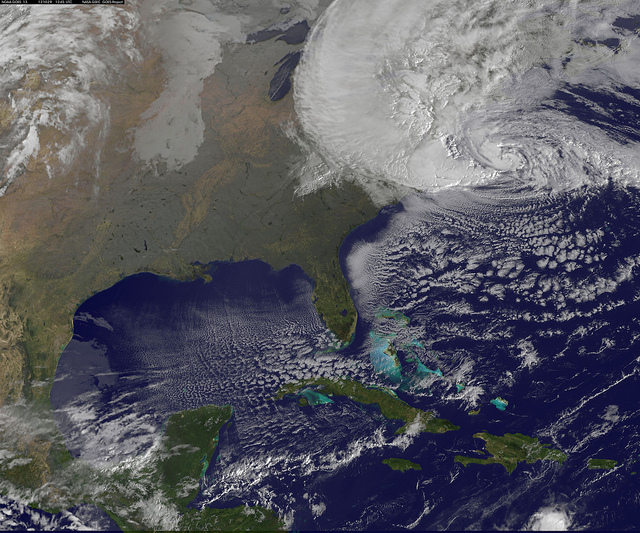Hurricane Katrina Retrospective Posted by Gabriele on Sep 1, 2015 in Culture

Image by NASA Goddard Space Flight Center on Flickr.com. (This is not a picture of Hurricane Katrina itself, but it shows the a hurricane and the Gulf Coast where Katrina hit.)
In the United States, the city of New Orleans is commemorating (both celebrating and mourning) the 10-year anniversary of Hurricane Katrina; a natural disaster that devastated this city and the surrounding towns of the American Gulf Coast. The 10-year anniversary of Hurricane Katrina has been in the news a lot in the United States. Over the past few weeks the news about New Orleans and Hurricane Katrina has focused on positive changes and growth in the city, but ten years ago the focus of the news about New Orleans was on tragedy and racial/economic inequality. This blog post is going to take a look at this important current news event.
New Orleans is a major American city, rich with a unique creole cultural including strong French, Caribbean, African, and Native American influences. New Orleans has and continues to be known worldwide for its music scene, eclectic food, and Mardi Gras festival. When Hurricane Katrina hit New Orleans in 2005 other aspects of this city were also made famous, such as its racially segregated neighborhoods and poverty.
The city of New Orleans was certainly changed by Hurricane Katrina, which is to date the costliest natural disaster in American history. There were over $108 billion dollars in damages from this hurricane! The changes in New Orleans since Hurricane Katrina have taken many years to come about. Many people said the response to this natural disaster were slow to begin with and not sufficient to help all those who needed help. But now after many homes and communities have been rebuilt a lot of people say that New Orleans is a better city than it was before Hurricane Katrina. That is certainly a matter of opinion, but one thing is sure, the people of New Orleans are very strong and have shown their love and determination to bring their city back to life day-after-day for a decade.
Here are some facts about New Orleans related to Hurricane Katrina.
The population of New Orleans:
Pre-Katrina: 484,000 people
Post-Katrina: 360,400 people
Many people lost their homes and jobs, especially people who were living in poorer neighborhoods and some people moved away and never returned.
The percentage of the city of New Orleans that was flooded in Katrina:
80%
Much of New Orleans is 6 feet (1.8 meters) below sea level on a regular basis! A system of levees (or damns) surround parts of the city to keep water out. When the high winds and waves from Hurricane Katrina hit New Orleans most of the city was flooded.
The number of people who lost their lives in because of the hurricane and flooding:
over 1,250
The exact number of people who died is unknown. Many people died in the flooding that occurred due to the high winds that broke the city’s levees.
If you want to see pictures and learn more about New Orleans and Hurricane Katrina here are some links to US news story that looks at New Orleans 10 years ago and now:
http://www.cbsnews.com/videos/new-orleans-10-years-after-katrina/

Build vocabulary, practice pronunciation, and more with Transparent Language Online. Available anytime, anywhere, on any device.
About the Author: Gabriele
Hi there! I am one of Transparent Language's ESL bloggers. I am a 32-year-old native English speaker who was born and raised in the United States. I am living in Washington, DC now, but I have lived all over the US and also spent many years living and working abroad. I started teaching English as a second language in 2005 after completing a Master's in Applied Linguists and a Certificate in English Language Teaching to Adults' (CELTA). Since that time I have taught ESL in the United States at the community college and university level. I have also gone on to pursue my doctorate in psychology and now I also teach courses in psychology. I like to stay connected to ESL learners around the world through Transparent Languages ESL Blog. Please ask questions and leave comments on the blog and I will be sure to answer them.



